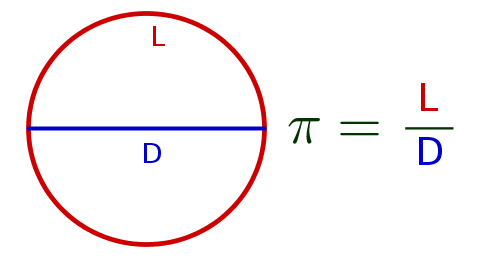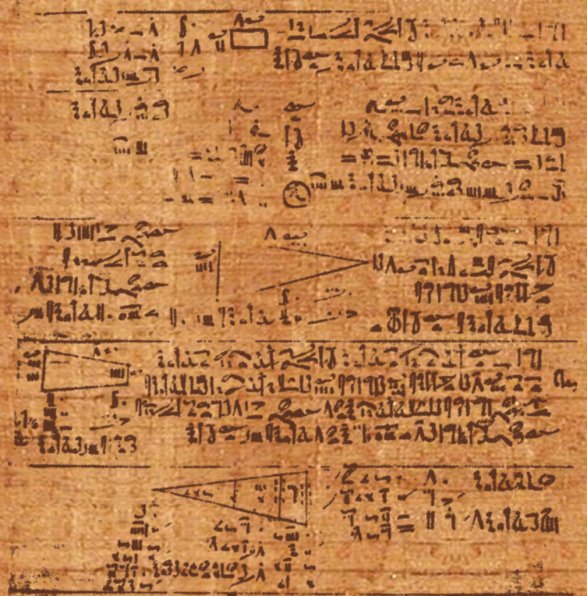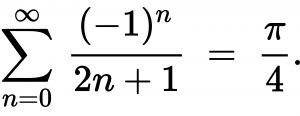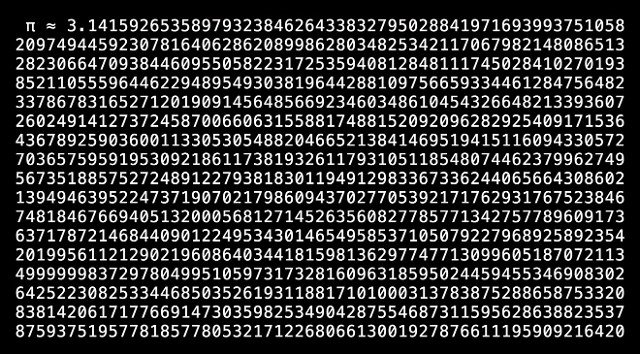Pi: The world famous constant.
I think we've all heard about pi at some point in our lives, but do we really know this number?, beyond that pi is about 3.1415. In this post you will find information about this number that maybe you did not know.

First it is important to mention that pi is defined as the ratio of the length of a circle by its diameter.

Throughout history many cultures have been searching for the decimals of pi, this goes back to the time of the scribes of ancient Egypt in 1800 BC, where it was found that the pi approach that the Egyptian people handled described in in rhind papyrus (ancient Egyptian document containing various mathematical problems), where an approximate value of pi is used, stating that the area of ??a circle is similar to that of a square whose side is equal to the diameter of the circle decreased by 1/9; that is, equal to 8/9 of the diameter.

in the period from 1900 to 1600 a.C, in mesopotamia the mathematicians found a good approximation of pi, they concluded that pi is approximately 3+1/8 = 3.125.
At the end of the fifth century, the Chinese mathematician and astronomer Zu Chongzhi calculated the value of pi in 3.1415926, which he called the default value, and 3.1415927, value in excess, and gave two rational approximations of pi, 22/7 and 355/113 , both well known, the last approximation being so good and precise that it was not matched until more than nine centuries later, in the fifteenth century.

Leibniz calculated in a more complicated way in 1682 the following mathematical series that bears his name:

In the 2000s, computers are able to obtain numbers that have an immense number of decimals. In 2009, more than two and a half billion decimal places of pi were found through the use of a T2K Tsukuba System supercomputer, composed of 640 high-performance computers, which together achieve processing speeds of 95 teraflops. They got it in 73 hours and 36 minutes.
Pi belongs to the set of irrational numbers, which means that it can not be written as a fraction, the demonstration of this was made by the mathematician Johann Heinrich Lambert in the year 1761.
Pi is also a transcendent number, it is not a solution of any polynomial of rational coefficients. In the 19th century the German mathematician Ferdinand Lindemann demonstrated this fact, thus definitively closing the permanent and arduous investigation about the problem of the square of the circle indicating that it has no solution.
In science and engineering, this constant can be used, most of the time, with a precision of only a dozen decimal places. With forty decimals it could accurately describe the curvature of the Milky Way with an error smaller than the size of a proton.
as a fan of mathematics I think that the pi number is one that is worth having knowledge of, and thus be able to culturalize more in the scientific field.

Congratulations @danielvielma! You have completed the following achievement on Steemit and have been rewarded with new badge(s) :
Click on the badge to view your Board of Honor.
If you no longer want to receive notifications, reply to this comment with the word
STOPTks for your entry in the last contest , new contest is out , would love to see you entry in it
https://steemit.com/contest/@itstime/5-steem-giveaway-what-do-you-expect-a-witness-to-do-for-steem
Congratulations @danielvielma! You received a personal award!
You can view your badges on your Steem Board and compare to others on the Steem Ranking
Vote for @Steemitboard as a witness to get one more award and increased upvotes!